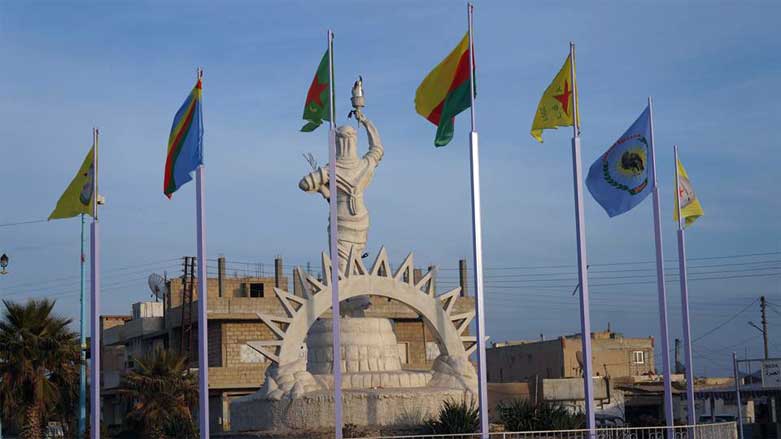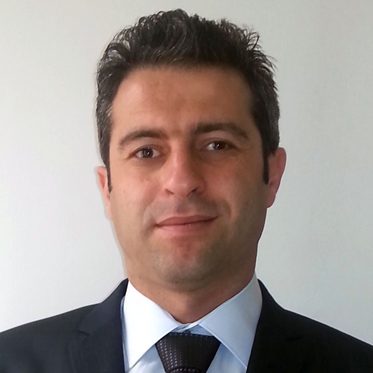2004 Qamishlo uprising: marginalization to national recognition

On March 12, Syrian Kurds commemorate the Kurdish uprising (Serhildan or raising one's head) in Syria which first ignited in the northeastern de facto Kurdish capital of Qamishlo spreading rapidly across other Kurdish-majority areas in 2004. This uprising was arguably one of the most formative events of Syrian Kurdish political awareness over the last two decades.
BACKGROUND
The incident leading to the uprising began during a seemingly uneventful football match between two rivals: Fetuwa, mainly supported by Arabs, and al-Jihad, supported by Kurds. In the Qamishlo stadium, Fetuwa fans attacked many Kurdish fans as did Syrian security forces, leaving six Kurds dead. Three children also died in the ensuing stampede trying to escape the stadium.
The 2003 US war on Iraq, in which the former Iraqi president Saddam Hussein's regime was toppled, additionally impacted events leading to the uprising. Many Arab fans at the stadium raised photos of Hussein and insulted Kurds, accusing them of treason for allegedly supporting the Americans in Iraq. The day after the violence in the stadium, as Kurds were marking the deaths of those killed, Kurdish anger escalated when Syrian security forces fired on funeral processions, causing the unrest to spread to several other Kurdish cities and regions.
During this uprising, another previously unprecedented event occurred. Kurdish demonstrators in the town of Amuda toppled a statue of the former president, Hafez Assad. This action was symbolic and targeted the Ba'ath regime itself and was reminiscent of the toppling of Saddam Hussein's infamous statue in central Baghdad less than one year earlier. This act was also a strong political statement in a country where the ruling family was supposed to be inviolable. According to many Kurdish and international sources, 40 people were killed, over 400 were injured, and 2,000 Kurds were arrested by state authorities. Though the Serhildan only lasted eight days, its impact has reverberated ever since.
MOVING FORWARD
The uprising also accomplished two key objectives. First, it thrust the Kurdish question on the Syrian public in a way previously unarticulated--from that point on, the regime had to consider its policies vis-a-vis Kurds; and secondly, it brought the question to the international community in general. After decades of suppressing and marginalizing Kurdish identity, appearing on state TV, President Bashar al-Assad recognized Syrian Kurds as “a basic element of the Syrian social structure.” To a degree, this was the beginning of many subsequent victories for Kurds in the country.
The short-lived uprising led to more positive relations with Kurds in neighboring countries as well, namely in Turkey and Iraq. Before 2004, Kurds in Syria had only used the word "uprising" for Kurdish protests in Turkey in 1990 and the uprising in the Kurdistan Region Iraq in 1991. On many occasions, Syrian Kurds held demonstrations to condemn the chemical attack on the city of Halabja, and supported the release of jailed Kurdistan Workers' Party (PKK) leader, Abdullah Ocalan. Hundreds, if not thousands of Syrian Kurds joined armed movements in those areas. However, after the 2004 uprising, many Kurds in Europe and throughout Kurdistan took part in demonstrations supporting Syrian Kurds as well.
The uprising led to a newfound awareness of identity and became a source of pride for many, highlighting an event around which Kurds from all walks of life could rally behind. The expert in Kurdish affairs Michael Gunter argues in his book Out of Nowhere that "for the first time in the history of the Kurds in Syria, a protest movement had united all the Kurds as well as eliciting support from the Kurds in Turkey and Iraq." In 2005, Masoud Barzani, the President of the Kurdistan Regional Government (KRG), called upon the Syrian government to grant the Kurds in Syria their democratic rights [1].
Perhaps just as crucially, the 2004 Kurdish uprising in Qamishlo served as a catalyst for the important Kurdish political role in Syria beginning in July 2012 when Syrian regime forces withdrew from most of the northeastern Kurdish-majority areas of the country, a year after the civil war erupted.
------
[1] Michael Gunter, Out of Nowhere: The Kurds of Syria in Peace and War (London: Hurst & Co, 2014), p. 3.
Editing by Benjamin Kweskin and Karzan Sulaivany
